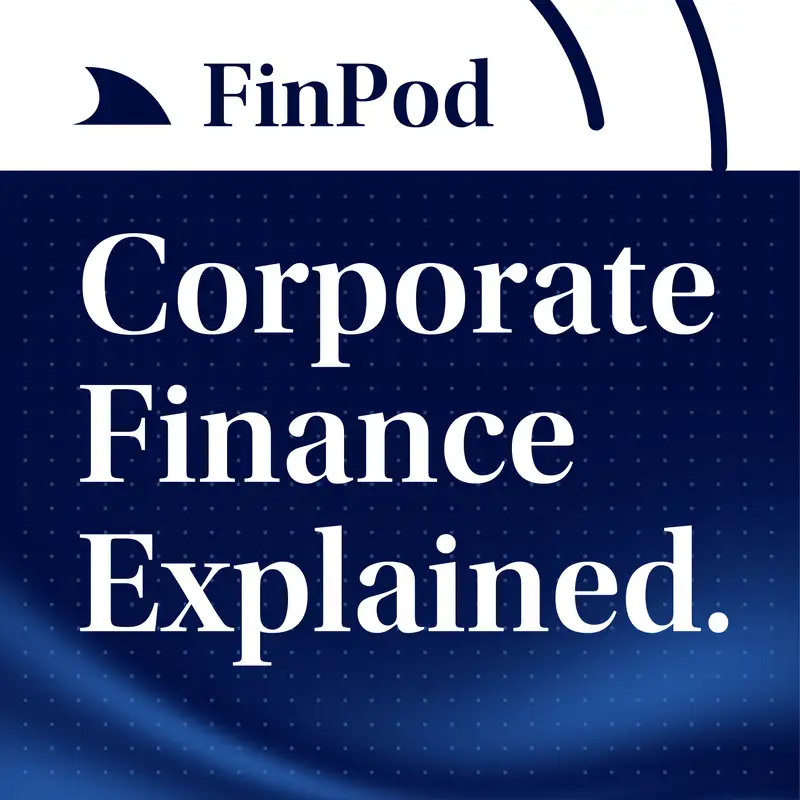Corporate Finance Explained | Corporate Tax Strategies
Why do profitable giants like Apple and Amazon report billions in earnings yet often pay surprisingly low effective tax rates (ETR)? On this episode of Corporate Finance Explained on FinPod, we pull back the curtain on corporate tax strategy, focusing on legal optimization and the strategic levers finance teams use to manage this massive cash outflow. Listen in to learn how taxes are not just a cost, but a manageable and critical strategic function.
The Corporate Tax Playbook: 5 Key Levers
Finance teams at multinationals use a sophisticated toolkit to legally minimize their ETR, often utilizing government-built policy incentives:
The Corporate Tax Playbook: 5 Key Levers
Finance teams at multinationals use a sophisticated toolkit to legally minimize their ETR, often utilizing government-built policy incentives:
- Tax Deductions and Credits: Maximizing credits for R&D investment and strategically using accelerated depreciation to generate short-term cash flow benefits.
- Transfer Pricing: The controversial method of setting internal prices for goods and intellectual property (IP) traded between subsidiaries. The goal is to allocate more profit to low-tax jurisdictions while adhering to the arm’s length standard.
- Holding Structures: Parking high-value assets (like core IP/patents) in subsidiaries based in low-tax jurisdictions (e.g., Ireland, Luxembourg) to have associated royalties taxed at a lower rate.
- Deferred Tax Assets: Booking tax benefits now that relate to future profits or past losses, providing financial flexibility.
- Corporate Inversions: The ultimate move of changing a company's legal home to a lower-tax country (largely curtailed by 2017 US regulations).
Real-World Pitfalls and Regulatory Challenges
Optimization is a tightrope walk. We examine where legal planning clashes with public opinion and regulatory pressure:
Optimization is a tightrope walk. We examine where legal planning clashes with public opinion and regulatory pressure:
- Apple and the EC: A stark example of a legal structure being challenged retroactively as illegal state aid by the European Commission, forcing the company to pay back billions.
- Starbucks in the UK: Faced massive reputational risk and boycotts because of paying almost no corporation tax, despite generating high sales, by using large transfer pricing royalty payments to a Dutch subsidiary.
- Pfizer and Policy Risk: The company's multi-billion-dollar inversion strategy was instantly killed by a sudden US Treasury change in administrative rules, demonstrating how policy shifts can wreck financial models.
- Amazon's Strategy: A focus on maximizing R&D deductions and using geographical allocation to book operating costs in high-tax countries while recognizing profit in lower-tax jurisdictions.
The Modern Tax Mandate for Finance
The focus has shifted from mere compliance to strategic resilience. The modern tax mandate requires a global, proactive approach:
The focus has shifted from mere compliance to strategic resilience. The modern tax mandate requires a global, proactive approach:
- Align Tax with Business Strategy: The tax structure must support real business activity and have economic substance; structures built purely for tax avoidance are major red flags.
- Focus on Cash Taxes: Finance must rigorously forecast cash taxes paid out the door, not just the accounting tax expense, as cash flow impacts liquidity and valuation.
- Rigorous Documentation: Meticulous records and data are the best defense against audits for complex intercompany policies like transfer pricing.
- Monitor Global Trends (BEPS): Understanding the OECD's BEPS (Base Erosion and Profit Shifting) initiative and the push for a 15% global minimum corporate tax rate is essential, as it fundamentally undermines traditional low-tax strategies.

